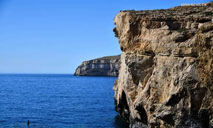Seven questions the Japanese government must answer on its decision to discharge nuclear wastewater into sea (4)
How can the Japanese government say that the contaminated water from the crippled Fukushima nuclear plant is the same as the water discharged during the normal operation of nuclear power plants?
The claims put forward by the Japanese government and media organizations that the contaminated water from the Fukushima nuclear accident is the same as the water discharged during the normal operation of nuclear power plants is nothing short of a fallacy. They are totally different in essence, as they involve different sources, different degrees of treatment difficulty, and different volumes of radioactive isotopes. The contaminated water is composed of cooling water injected into the melted reactor core, as well as a mix of groundwater and rainwater. This radioactive wastewater consists of large amounts of radioactive isotopes derived from the melted reactor core, with these radioactive elements being very difficult to treat.
In contrast, the discharges from a normally operated plant are mainly comprised of water emitted from the plant after its use as a reactor coolant and after being drawn from a land drainage, a discharge that contains few nuclear fission products. After being treated according to the best available techniques and strictly monitored under international standards, this type of treated wastewater is much less harmful and the presence of radioactive elements is well below the stipulated international standards. Hence, misleading the public on these matters and hoping to muddle through in their decision to discharge the radioactive wastewater will by no means fool the international community.
 |  |
Photos
Related Stories
- China backs ROK's call for int'l organizations to cooperate on Fukushima issue
- 6.1-magnitude quake strikes off Japan's Hokkaido Prefecture, no tsunami warning issued
- Japan expedites vaccine campaign for seniors amid criticism over sluggish rollout
- Japan extends state of emergency in six places to May 31 over COVID-19
- Japan gov't set to extend, expand virus state of emergency
Copyright © 2021 People's Daily Online. All Rights Reserved.











